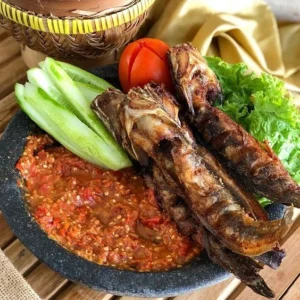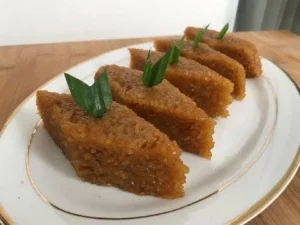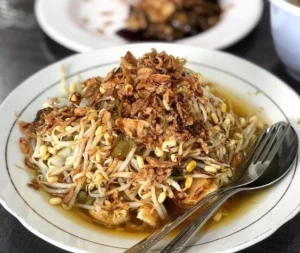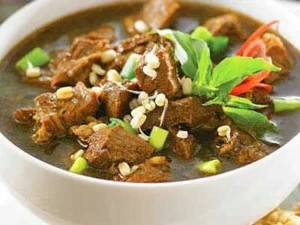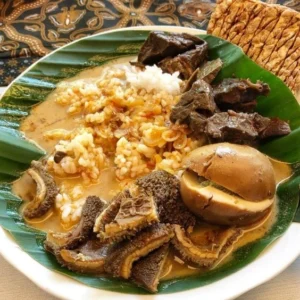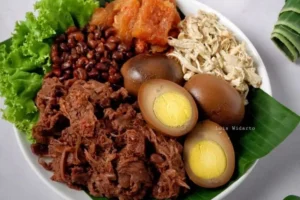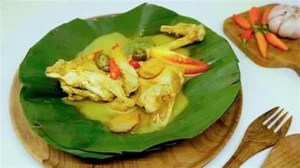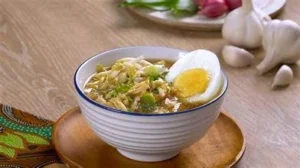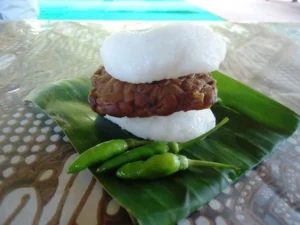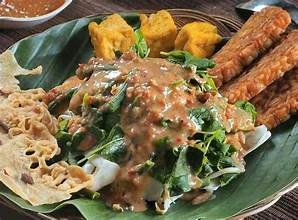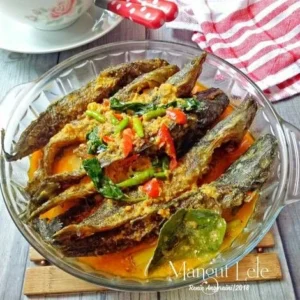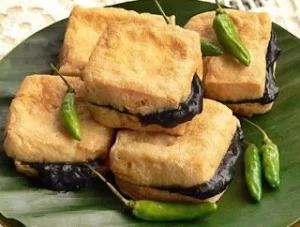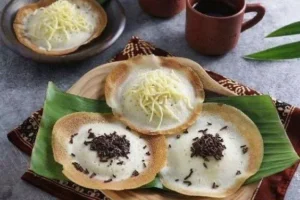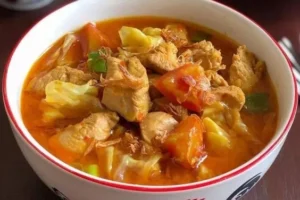Indonesia, as a country rich in cultural and culinary diversity, offers a variety of delicious dishes from every corner of the archipelago. One of the regions famous for its culinary richness is Java, an island steeped in traditions and unique flavors. In this article, we invite you to discover 22 Javanese Culinary Specialties that you should definitely try. From Pecel Lele to Tongseng Ayam, each dish has its own story and flavor that will delight your taste buds. Come closer quickly and savor this tempting culinary adventure!
22 Javanese Culinary Specialties to Try
1.Pecel Lele
source : pinterest.com
Pecel Lele, the first dish on our list of Javanese Culinary Specialties, is an interesting choice to start your culinary adventure. Served fried until it reaches a captivating crispy sensation, catfish offers a truly exceptional taste dimension. Not only delicious, but Pecel Lele also reflects the living heritage of Javanese tradition. Served with spicy sauce and fresh vegetables, this combination creates a harmony of flavors that will delight your taste buds. The uniqueness of this dish lies not only in its taste but also in the cultural experience that accompanies it, making every bite a complete journey into local wisdom.
Feeling the crispy delicacy of catfish with every bite, coupled with the spiciness of the sauce, Pecel Lele evokes memories of warmth and conviviality. This dish is not just food but a long story of Javanese cuisine that blends taste, smell, and tradition. Thus, when you taste Pecel Lele, you are not only savoring delicious cuisine but also immersing yourself in the history and cultural richness of each captivating and unforgettable Javanese specialty.
2.Dawet Ireng
source : pinterest.com
Continuing our journey through Javanese Culinary Specialties, the next stop takes us to Dawet Ireng, a typically Javanese refreshing drink that charms the senses. Made from simple ingredients such as rice flour, grated coconut, and palm sugar syrup, Dawet Ireng manages to create an unforgettable refreshing experience. This drink enchants the palate with a combination of soft sensations and sweet delights.
Dawet Ireng is not just an ordinary drink; it is an artistic creation stemming from the Javanese cultural heritage passed down from generation to generation. The pleasure of Dawet Ireng lies not only in its delicious taste but also in the local wisdom that creates a balance of flavors. By savoring Dawet Ireng, you are not only enjoying the delicacy of a cool drink but also appreciating the traditional atmosphere present in every sip. That’s the magic of Dawet Ireng, combining taste, smell, and cultural richness into a single experience that captivates the senses.
3.Wajik
source : pinterest.com
Javanese culinary specialties include Wajik, a traditional cake that charms the heart and taste buds, is the next destination in our Javanese culinary journey. Made from simple ingredients such as glutinous rice, grated coconut, and palm sugar, Wajik manages to produce a snack that is both soft and legitimate. The delicate combination of soft glutinous rice, fragrant coconut, and sweet palm sugar creates a flavor that delights every taster.
Wajik is not just a snack; it also holds a special place in Javanese culture. Often presented at various traditional events, Wajik becomes a symbol of harmony and blessing. The manufacturing process requiring patience reflects life values passed down from generation to generation. When you taste Wajik, you are not only enjoying the delicious taste but also feeling the warmth and depth of each bite. That’s the uniqueness of Wajik, a cake that not only fills the stomach but also touches the heart with the beauty of Javanese tradition.
4.Lupia Semarang
source : pinterest.com
If you are in Semarang, don’t miss trying Lupia Semarang, a dish that charms the heart and palate. The crispy skin of the lumpia seems to crown the combination of ingredients such as bamboo, chicken meat, and abundant eggs. This fusion creates an unforgettable delicacy, offering a satisfying culinary experience. Lupia Semarang carefully presents a perfect combination of taste and texture, inviting enthusiasts to an unparalleled culinary adventure.
Lupia Semarang is not just a dish but a culinary masterpiece that has stood the test of time. The uniqueness of the taste obtained through the combination of fresh ingredients and meticulous cooking process makes it a favorite for many people. With every bite, you will feel the delicacy of the crispy lumpia skin combined with the tenderness of bamboo, chicken meat, and eggs. Here is the magic of Lupia Semarang, a dish that not only satisfies the palate but also becomes a memorable culinary destination with every visit to Semarang.
5.Lontong Balap
source : pinterest.com
Next, don’t miss Lontong Balap, a Javanese Culinary Specialties specifically from Surabaya, which embraces the flavors and uniqueness of its cuisine. This dish features sticky rice, bean sprouts, lentho (fried mashed mung beans), crackers, and a delicious peanut sauce, creating an unforgettable harmony of flavors. Each bite of Lontong Balap offers a unique experience of blending authentic and genuine flavors. By savoring the delicacy of its cuisine, you are not only exploring taste but also the depths of cuisine in every corner of Surabaya.
Lontong Balap is not just food but an artistic achievement of cuisine involving many elements. With soft sticky rice, fresh bean sprouts, crunchy lentho, crispy crackers, and a generous peanut sauce, Lontong Balap becomes a symbol of Indonesia’s culinary diversity and richness. By enjoying this dish, you are not only treating your taste buds to authentic flavor but also exploring the culinary richness of Surabaya, rich in history and tradition.
6.Rawon
source : pinterest.com
Next, let’s explore Rawon, an iconic black soup dish from East Java. Made from beef, grated coconut, and special spices, Rawon offers a distinctive and savory flavor. The uniqueness of this dish lies in its thick black sauce, providing a very different culinary experience.
Rawon is not just a dish but a cultural heritage that illustrates the richness of Indonesian spices. When you taste Rawon, the distinctive taste sensation can be enhanced by adding chili and lime juice. The spicy and tangy combination created adds a new dimension to this dish, creating an unforgettable tasting experience. Besides the delicacy of taste, Rawon also becomes a symbol of Indonesia’s culinary diversity, offering a rich and deep culinary adventure.
7.Nasi Gandul
source : pinterest.com
Let’s move on to Nasi Gandul, a dish that awakens the senses and warms the heart, originating from Pati, Central Java. This dish features rice cooked in a thick broth with tender beef, creating a distinctive delicacy that is hard to ignore. Each bite of Nasi Gandul offers a satisfying culinary experience, where the rich broth flavor harmoniously blends with the tenderness of beef.
Nasi Gandul is not just a delicious dish but also a cultural heritage to explore. The meticulous cooking process and special spices reflect local expertise and wisdom passed down from generation to generation. This dish leaves a culinary imprint that ties the past to the delicacy of the present. Thus, by tasting Nasi Gandul, you will appreciate not only a delicious dish but also traverse the history and culinary richness embodied in every bite.
8.Mie Lethek
source: kooliner.com
Mie Lethek, a dish that attracts attention with its unique character, is a different choice from ordinary noodles. Made from rice flour and banana leaves, Mie Lethek has a unique texture, both elastic and soft. The tenderness of these noodles is the result of natural ingredients that add a special touch to the experience of tasting them. Serve Mie Lethek with a characteristic sauce that permeates each noodle, as well as delicious toppings to add a flavor dimension.
The combination of the elasticity of the noodles, the umami flavor of the sauce, and the delicacy of the toppings creates an exceptional and unforgettable tasting experience. Mie Lethek is not just a dish but a realization of culinary art that blends tradition and creativity, bringing Javanese flavor to a higher level that captivates the taste buds.
9.Gudeg
source : pinterest.com
Next, let’s introduce Gudeg, a Javanese Culinary Specialties from Yogyakarta that delights with its combination of young jackfruits, coconut milk, and various spices. The delicacy of Gudeg lies not only in its unique taste but also in its cooking process that requires patience and expertise. Each bite of Gudeg offers a deep culinary experience, infusing sweetness, umami, and mild spiciness in every fiber of tender jackfruit.
Gudeg is not just a dish that pleases the palate but also a culinary masterpiece that reflects the richness of cultural heritage. Its long and careful cooking process demonstrates that true delicacy requires time and devotion. By savoring Gudeg, you are not just consuming a dish but entering the world of Yogyakarta’s tradition, rich in flavors and aromas. Thus, savor every bite of Gudeg as a culinary journey that brings you closer to local wisdom and the authentic delicacy of the homeland of Gudeg.
10.Gethuk
source: carimasakankhas.blogspot.com
Next, let’s get to know Gethuk, a delicious snack resulting from the characteristic transformation of sweet potatoes. Made by boiling and mashing sweet potatoes, then mixing them with grated coconut and sugar, Gethuk creates a captivating combination of flavors. The uniqueness of Gethuk lies in the association of soft texture and sweetness, making it a perennially awaited treat at various events.
Its sweet taste invites pleasure with every bite, while the softness of sweet potatoes offers an exceptional textural dimension. Gethuk is not just a snack but also a bouquet of memories and joy with each serving. Perfect for all occasions, Gethuk becomes a symbol of friendliness and joy. Serve Gethuk at your events or as a casual companion, and enjoy this simple delicacy that pleases every palate that tastes it.


